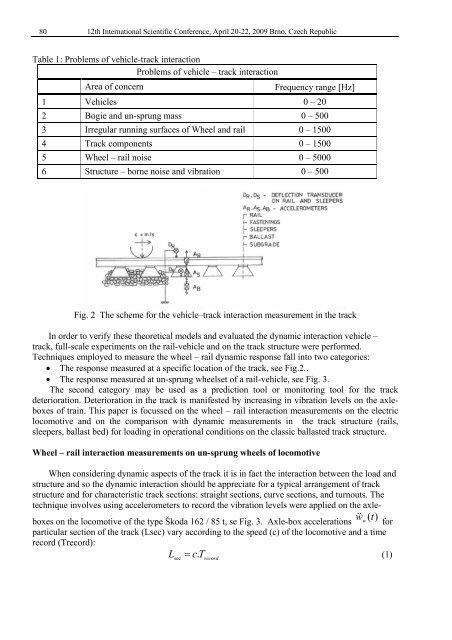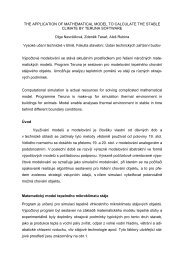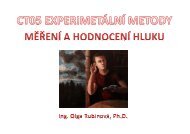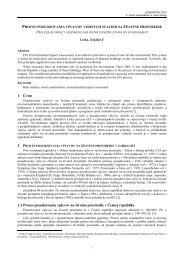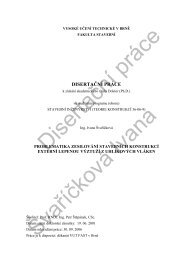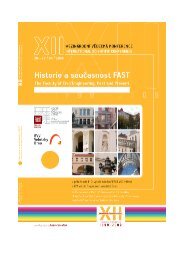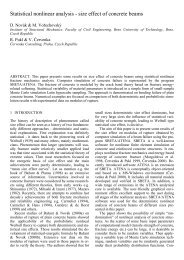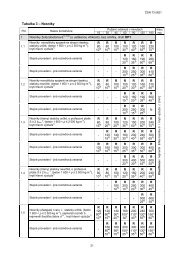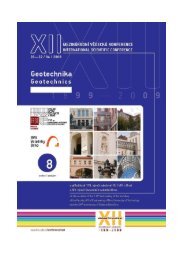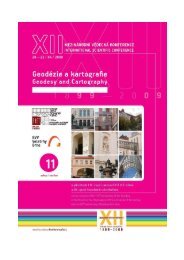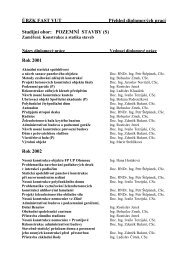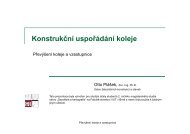Dopravnàstavby - Fakulta stavebnà- Vysoké uÄÂenàtechnické v Brně
Dopravnàstavby - Fakulta stavebnà- Vysoké uÄÂenàtechnické v Brně
Dopravnàstavby - Fakulta stavebnà- Vysoké uÄÂenàtechnické v Brně
You also want an ePaper? Increase the reach of your titles
YUMPU automatically turns print PDFs into web optimized ePapers that Google loves.
8012th International Scientific Conference, April 20-22, 2009 Brno, Czech RepublicTable 1: Problems of vehicle-track interactionProblems of vehicle – track interactionArea of concernFrequency range [Hz]1 Vehicles 0 – 202 Bogie and un-sprung mass 0 – 5003 Irregular running surfaces of Wheel and rail 0 – 15004 Track components 0 – 15005 Wheel – rail noise 0 – 50006 Structure – borne noise and vibration 0 – 500Fig. 2 The scheme for the vehicle–track interaction measurement in the trackIn order to verify these theoretical models and evaluated the dynamic interaction vehicle –track, full-scale experiments on the rail-vehicle and on the track structure were performed.Techniques employed to measure the wheel – rail dynamic response fall into two categories:• The response measured at a specific location of the track, see Fig.2..• The response measured at un-sprung wheelset of a rail-vehicle, see Fig. 3.The second category may be used as a prediction tool or monitoring tool for the trackdeterioration. Deterioration in the track is manifested by increasing in vibration levels on the axleboxesof train. This paper is focussed on the wheel – rail interaction measurements on the electriclocomotive and on the comparison with dynamic measurements in the track structure (rails,sleepers, ballast bed) for loading in operational conditions on the classic ballasted track structure.Wheel – rail interaction measurements on un-sprung wheels of locomotivew&&w(t)When considering dynamic aspects of the track it is in fact the interaction between the load andstructure and so the dynamic interaction should be appreciate for a typical arrangement of trackstructure and for characteristic track sections: straight sections, curve sections, and turnouts. Thetechnique involves using accelerometers to record the vibration levels were applied on the axleboxeson the locomotive of the type Škoda 162 / 85 t, se Fig. 3. Axle-box accelerations forparticular section of the track (Lsec) vary according to the speed (c) of the locomotive and a timerecord (Trecord):Lsec= c.T record(1)


